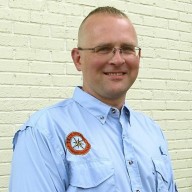Survival Training Technique … Learn From Other’s Mistakes
On Saturday morning, I read the sad news account of the death of a South Korean exchange student a day earlier at the famous Seven Sisters Cliffs in England. Business Insider reported that Hyewon Kim, who was touring the area by herself, asked someone to take a photograph of her as she “jumped” from the cliff. Kim walked by numerous posted signs that warned her of the danger along the cliffs to find the perfect spot for her photograph, which presumably she intended to then text to family and friends back home. However, her simple hop into the air caused the ground to crumble so Kim fell 200 feet to the shore below, suffering “catastrophic injuries.” What most of us would have considered a typical lark in the outdoors is now a tragedy for a family
Do you think that this is the first time that I’ve read about such accidents? No, I read about them all too frequently.
In fact, I had just read about a very similar account to Kim’s in the book, Over the Edge: Death in the Grand Canyon, whose focus is to provide accounts of all of its known fatal mishaps. I received the book a few days earlier as a gift from a client, Bethany, who wanted to share it with me since she believes that it reflected many of the themes and ideas that she learned in her recent Advanced Wilderness Survival course at True North.
Among other things, the book highlights two important messages. First, there is a recurring tendency of visitors to the Grand Canyon specifically, and the outdoors generally, to have a “911 mentality.” That is, the assumption that help from professional responders “will always be immediately forthcoming” even when one recklessly places oneself in danger. More to the point, people have a tendency to treat the outdoors like an amusement park. Second, the authors assert that “there are no new accidents — only new people having the same old accidents.” Still, they are reluctant to even use the word “accident,” since by definition, the word implies an “unforeseeable incident” … which few tend to actually be.
Out of this, the authors explain why they wrote a “book about death.” They admit that the title may sound “lurid, exploitive, even macabre.” However, they believe that their book about death is really about life. That’s because if we learn from the mistakes of others, we can better avoid them and enjoy our life to the fullest.
Personally, I agree with the intent of the authors. After all, learning from others, whether the outcome be positive or negative, is how our species has survived and evolved over the last 70,000+ years. In its most simplistic sense, how did we learn which berries were edible and others poisonous? As a group, we watched one eat a sample off a bush. If he didn’t die in agony minutes or hours later, we hungrily joined him. If he did, well, we moved to another bush and waited for someone brave (or stupid) to try a sample.
For what it’s worth, my view is shared by other wilderness survival instructors. In his influential book, Deep Survival: Who Lives, Who Dies, and Why, Laurence Gonzales calls this process “communing with the dead.” I could paraphrase what Gonzales writes, but I would only diminish his point so I will instead quote it:
If you could collect the dead around you and sit by the campfire and listen to their tales, you might find yourself in the best survival school of all. Since you can’t, read the accident reports in your chosen field of recreation … [Such reports] not only provide reading that is by turns gripping, hilarious, and heart-wrenching, but also tell you the mistakes other people have made. Then you can be on the lookout for similar situations and perhaps avoid them.
So, how can you, too, begin to learn from the mistakes — and just as importantly, the successes — of others? Personally, I often spend my early weekend mornings with a fresh cup of coffee examining examining the recent news (which is when most outdoor accidents seem to occur). Many popular internet search engines make it extremely easy to sort through the national, and international, news to uncovers such stories.
There are many great books to read too. Certainly consider reading Over the Edge and Deep Survival, but I would also recommend such titles as Into Thin Air, Jungle: A Harrowing True Story of Survival in the Amazon, and Flight 232: A Story of Disaster and Survival.
Also consider checking out a National Park Service blog, run by the rangers at Yosemite National Park, called, Search and Rescue: Lessons from Field. As the rangers explain, “Each year, park rangers and search and rescue (SAR) personnel respond to approximately 250 emergency incidents in Yosemite National Park. The park’s Preventive Search and Rescue (PSAR) program posts selected SAR incident reports on this blog in the hopes that readers can learn from the experiences of others.”
Hopefully, this article will help to change your mindset a bit. Because, you see, when it comes down to it, wilderness survival training really isn’t so much about learning to deal with a life-threatening situation when it occurs, it is more about learning to avoid it in the first place.

